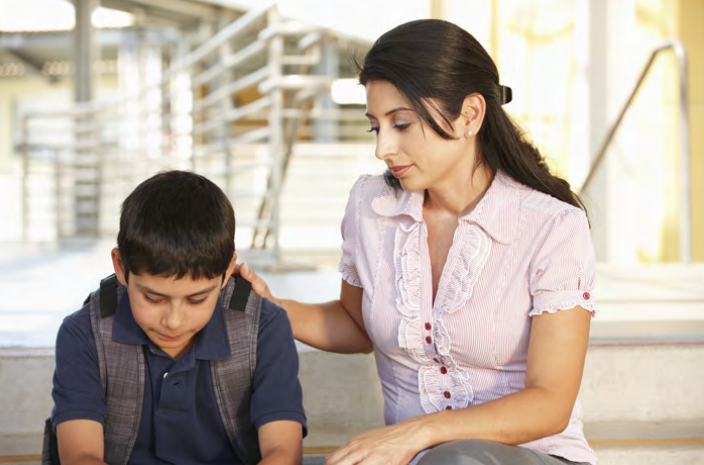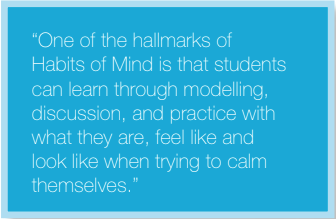Teaching Students to Regulate Their Emotion

So often, we find students over stimulated. The most telltale signs show up via inappropriate behaviours, outbursts, negative comments and anxiety-ridden features, such as fidgety body movements, leg shaking or fist clenching. These visuals should raise immediate concern, putting educators in a position to act. The goal needs to be getting the student to a self-regulated mindset. But, how?
The upstairs and downstairs brain are analogies to connect the actions and behaviours of children. Visualise the brain as a house. In the downstairs, chaos tends to always take place in this sector, and often at a rapid pace. In children, this is where the basic functions like breathing and blinking occur as well as impulses and emotions like anger and fear. Often, children in the downstairs brain present loss of control with impulses, which leads to poor decision-making and an inability to think with clarity. As for the upstairs, more positive and optimal thinking presides, but often at a slower pace. This area of the brain is responsible for intricate mental processes, like planning, decision-making, self-awareness, empathy, problem solving and decision making.
The reasons vary as to why children suffer from being in the downstairs brain. Everything from distractibility, troubling incidents with a peer or even reacting to a poor grade. For instance, imagine a student enters the classroom after just receiving a failing grade on a test. This student storms into the room, throws their bag on the ground, rips the test and punches the desk. They need a strategy to get them upstairs.
A strategic approach for guiding students from downstairs to upstairs is through the Habits of Mind. The Habits of Mind, developed by Arthur Costa and Bena Kallick, are a set of 16 dispositions that serve as a pathway to finding a solution when one is not apparent. These habits can be utilised within the classroom as a way to build culture, curriculum, behaviour and structure within completing assignments. Moreover, these dispositions are centred on providing mindful approaches toward
developing productive behaviours in thinking and processing.
Why Habits of Mind and the Brain?
As teachers, one of the most neglected topics is “how” the brain functions and “why” it affects our behaviours. In other words, the more we get to know our thinking patterns, triggers, and behaviours, the more inclined we will be to understanding the actions we unconsciously sometimes display.

One of the hallmarks of Habits of Mind is that students can learn through modelling, discussion, and practice with what they are, feel like and look like when trying to calm themselves.
Process for De-escalation with 4 Habits of Mind
In this 5-step process, I will provide a definition for each Habit of Mind, explain the procedure at each step, and give a scenario/ prompt to follow. Depending on the situation, this process should take anywhere between 3-5 minutes.
1. Managing Impulsivity: Take your time! Think before acting and remain calm. At the sign of arousal stop the student in their present state and instruct them to remain calm and take a deep breath. Get the student to manage their impulses. “I notice you are really upset. Let’s work together on breathing slowly for one minute in order to manage your impulses.”
2. Thinking About Your Thinking (Metacognition):
Being aware of your own thoughts, feelings and actions. Once the student is calm, lead them into the practice of recognising how they feel, what they are thinking about, and how they can get to a point of understanding their thoughts. “What is going on in your brain right now? Are you in the downstairs? Tell me how you feel, what you’re thinking and if you are ready to move on to getting upstairs?”
3. Gather Data Through all Senses: Observe through sight, taste, touch, smell and hearing. Envision a love or passion – the beach, a sport, flowers, puppies – anything that will calm their thoughts. Have the students close their eyes and visualise the smell, taste, touch, sound and sight of the item – build the senses!
“Take a minute, close your eyes, breathe slowly, and think about something that makes you happy. I know you told me how much you love your grandma’s fresh-baked cookies. Think about walking to the upstairs brain, in a calm state of mind, as you smell the cookies, taste the cookies and feel the warmth of them right out of the oven.”
4. Responding With Wonderment and Awe: Intrigued by what you are able to do to move yourself upstairs: Observing the world’s beauty. Open your eyes, and say congratulations! Praise their ability in working through feelings and getting to a better state of mind. “Now, open your eyes. How are you feeling? Are you upstairs? If not, are you almost there? You should feel so happy and excited about your work in calming down.”
5. Setting a Goal for the Future: Thinking Ahead “The next time you are feeling (upset, angry, frustrated, disappointed) but I am not with you, what can you tell
yourself to move from the downstairs to the upstairs brain and to take charge of your own thinking an d behaviour?” Through using these Habits of Mind to encourage meditative practice, children will hopefully acquire a mechanism for regulating themselves and that will lead them to a more productive, mindful and effective self.
